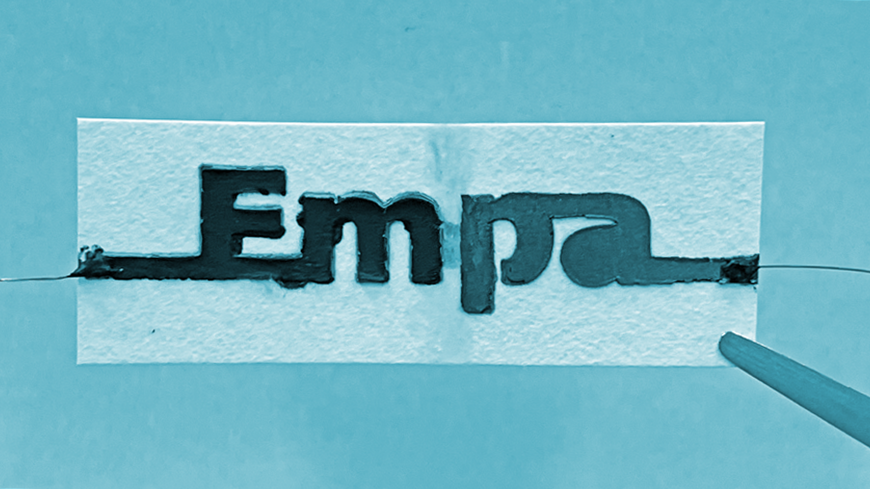E-waste is the name given to electronic products at the end of their “useful life.” Generally, computers, televisions, VCRs, stereos, copiers, and fax machines can be refurbished, reused or recycled in one way or another, but what does this mean for single-use electronics?

Image Credit: Empa
Single-use electronics are becoming increasingly popular in medical and scientific research-based applications, and as the name suggests, once these devices or components have been used, they are then to be discarded. This has led to much debate around the environmental impact of single-use electronics and whether their use should be encouraged at all.
Recently, a team of researchers at the Cellulose & Wood Materials Laboratory at the Swiss Federal Laboratories for Materials Science and Technology (Empa) have been working on a disposable paper battery that could reduce the environmental impact of single-use electronics.
The paper, published in the journal Scientific Reports, describes how a disposable water-activated paper battery could be a sustainable alternative to existing battery components.
Paper Power
Sustainable materials were a prerequisite for the Empa team, who only considered nontoxic and abundantly available elements when fabricating the device. Typically, conventional batteries contain toxic and harmful chemicals which must be carefully disposed of to mitigate any environmental impact.
The team was fairly confident about their approach, but developing these materials and ink systems still demands a cautious approach to ensure effective working systems and environmental needs.
To fabricate the disposable paper batteries, the team used additive manufacturing by developing electrodes and current collector inks that can be stencil printed on paper to produce batteries of arbitrary shape and size that would activate when exposed to water.
The water-activated battery remains inert until the paper substrate absorbs water, taking advantage of its natural wicking characteristics.
After testing various set-ups for the disposable battery, the team decided to use a graphite ink for printing the cathode, a zinc ink for the anode and salt-infused paper for the electrolyte. Once water is introduced into this assembly, the electrons begin to flow through the paper battery, providing power to a single-use electronic device.
Two-Cell Battery
The researchers found that once activated, a single cell can deliver an open circuit potential of 1.2 V which has a peak power density of around 150 µW/cm2 at 0.5 mA. Moreover, when the paper device is kept dry, the battery is shelf-stable.
Once the paper battery is exposed to water it takes aroundt 20 seconds for the battery to fully activate. At that point, it generates a stable 1.2 volts of electricity until the paper dries out – an AA battery provides 1.5 volts. The battery also produced a further 0.5 volt for over an hour when the team dampened the paper again.
Using two-cells, the team was able to power an alarm clock and its LCD display:
The performance that you see on this device, I think, is sufficient for a lot of these applications already.
Gustav Nyström, Head of the Cellulose & Wood Materials Laboratory, Empa
However, it is unlikely that the disposable paper battery will replace conventional AA batteries anytime soon but rather be used in single-use applications such as environmental sensors, medical diagnostic tests, or hand-held surgical devices that require electronic integration.
While scalability is not yet known and power densities limit the device, Nyström and his team believe the product could power a wide range of low-power electronics and fit into the IoT ecosystem within just 2-5 years. The next steps include life cycle assessment as well as evaluating the carbon impact the disposable paper battery has on single-use electronics.
References and Further Reading
Poulin, A., Aeby, X. and Nyström, G., (2022) Water activated disposable paper battery. Scientific Reports, [online] 12(1). Available at: https://www.nature.com/articles/s41598-022-15900-5
HAGMANN, M., (2022) Empa - Communication - Wasser-aktivierte Batterie. [online] Empa.ch. Available at: https://www.empa.ch/web/s604/wasser-aktivierte-batterie
Disclaimer: The views expressed here are those of the author expressed in their private capacity and do not necessarily represent the views of AZoM.com Limited T/A AZoNetwork the owner and operator of this website. This disclaimer forms part of the Terms and conditions of use of this website.